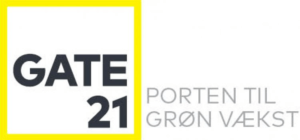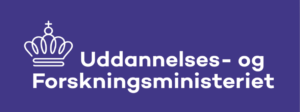
Revitalisation of our Network Group with Zoom, Mural and Excellent Facilitation
We finally got a meeting in the network again – and it was much needed! Throughout the network’s 7-year lifespan, all our
A few days ago, I attended the opening reception at the Copenhagen Innovation House. In two months, a former Danske Bank office has been transformed into a new innovation space for municipal departments, citizens, private enterprises etc. The new initiative is headed by Diana Arsovic Nielsen, who was previously Director of Health Innovation Centre of Southern Denmark.Some thoughts on the opening have already been given by Steinar Valade-Amland in his LinkedIn post The Usual Suspects, where he reflects on the observation that the attendees were pretty much the same bunch as when he was attending similar events. Funny enough, I had a similar, but different experience – I was wondering why there were so few that I actually knew; a glimpse of an answer came when Lord Mayor Frank Jensen, who gave an excellent opening speech, asked the audience to indicate who the lucky ones to be outposted from City Hall to the Innovation House were: A forest of hands from public servants showed.
“Ahhh,” I thought, “but of course, this is because this is a municipal initiative, and they have invited employees and connections from their network, which means that there are not very many attendees from the private sector.” This reflection is supported by one of the Innovation Barometer’s observations, that for municipally generated innovations, only 20% of these occur in collaboration with private enterprises:
It is of course a great initiative to build into the concept that selected employees from all 7 municipal departments must spend regular time in the Innovation House, to encourage cross-departmental innovation and collaboration. And it is good to have a physical space and staff to facilitate this. And of course, to have the necessary initial funding.
Frank Jensen, Lord Mayor of Copenhagen, who did the opening speech, summarised the raison d’etre of the new Innovation House as follows:
Copenhagen faces a lot of challenges, some of which are rooted in the fact that 1,000 new citizens settle in Copenhagen every month, and that the city needs to provide better service for less money. The initiative is spearheaded across the board from city hall, and fits nicely into Frank Jensen vision to develop Copenhagen to become the best city in the world. The house should be a place for open innovation, co-creation and prototyping. Each Friday, there is open house, where everybody can join in for a beer and a chat.
I decided to look a little bit more into the background for this initiative, since the City of Copenhagen is not the first large city or municipality to come up with such an initiative.
Starting at the national level, Denmark has 7 Innovation Centres in the world: Munich, New Delhi, São Paulo, Seoul, Shanghai, Silicon Valley, and Tokyo.
According to Center for Offentlig Innovation (COI), there are 16 public sector innovation centers. A deep dive into their interactive map reveals this list:
There are much more than 16 innovation centres, though; my guess is that at least half of all municipalities has one (Copenhagen is probably one of the last); a Google search on “innovationscentre kommuner” gave 19.700 hits on August 16th. I haven’t been able to find a comprehensive overview, but it would be worthwhile to create one. The map that COI has created is a start, but it is far from complete, and it doesn’t give an overview of who is working with who, and it doesn’t give an overview of what the centres are actually doing.
The background for the creation of Innovation House Copenhagen can be found on the City of Copenhagen’s website, below I have provided an excerpt:
The Innovation house should be a place that creates value for the municipality’s citizens, customers, employees and companies / suppliers. The value is created by being an innovation partner that facilitates, inspires and challenges municipal departments, as well as by being a service organization that supports current management needs. The Innovation house must possess skills and be able to deliver a performance that differs from what is possible in the City of Copenhagen today. The purpose of creating Innovation house is generally to develop better and more innovative solutions, and to create a whole focus of the municipality’s core processes end to end – all the way from preliminary analysis to evaluation and operation. In addition, The Innovation house helps strengthen the innovation capabilities in the municipality’s core operations through training of key actors in the administrations and support the development of innovation culture in Copenhagen.
Three “bottom lines” have been identified for the Innovation house:
In order to deliver on these goals, Innovation house’s core mission is to facilitate, professionalize and strengthen the involvement of citizens, customers, employees and suppliers in the development of municipal services. These could include a variety of new projects, maintenance of existing systems or assessing the quality of operation of municipal services. It would also entail a wide gamut of up-skilling of its employees and an understanding of using clean-up equipment and spill kits (navigate to this website to learn more about different kits and their utilization). In so doing, the Innovation house believes that municipal employees will be inspired and challenged to create better and more innovative development projects for the benefit of the people of Copenhagen and municipal employees.
The Innovation house must therefore support all stages of an innovation project, e.g.:
For the Innovation house to be able to deliver on these objectives, it is not intended that the house possesses a deep insight in the municipality’s core tasks, but are staffed mainly with skills that can support project development, user involvement and design processes. The Innovation house do not do projects for management but with management.
My first impression of this new initiative is definitely positive. Based on my research end experience with public and private innovation initiatives, I will offer the following list of things to watch out for:
What are your thoughts about the Copenhagen Innovation House? Please feel free to comment below.

We finally got a meeting in the network again – and it was much needed! Throughout the network’s 7-year lifespan, all our

The collaboration with Finn Kollerup was very rewarding for us. He inspired our participants to think about their everyday challenges in a new

Our task was to facilitate an efficient process and collect the results from a high-profile meeting. A special factor was that the schedule